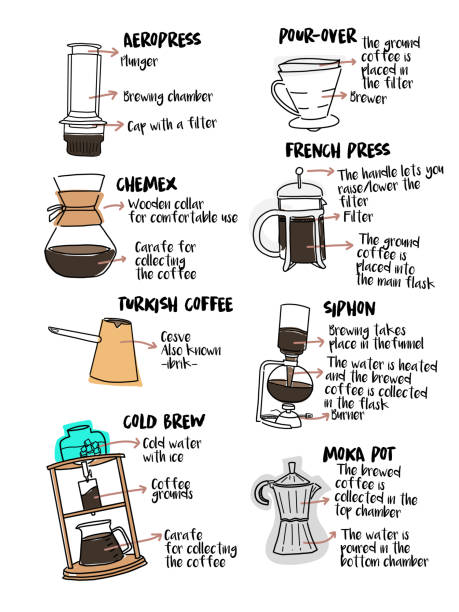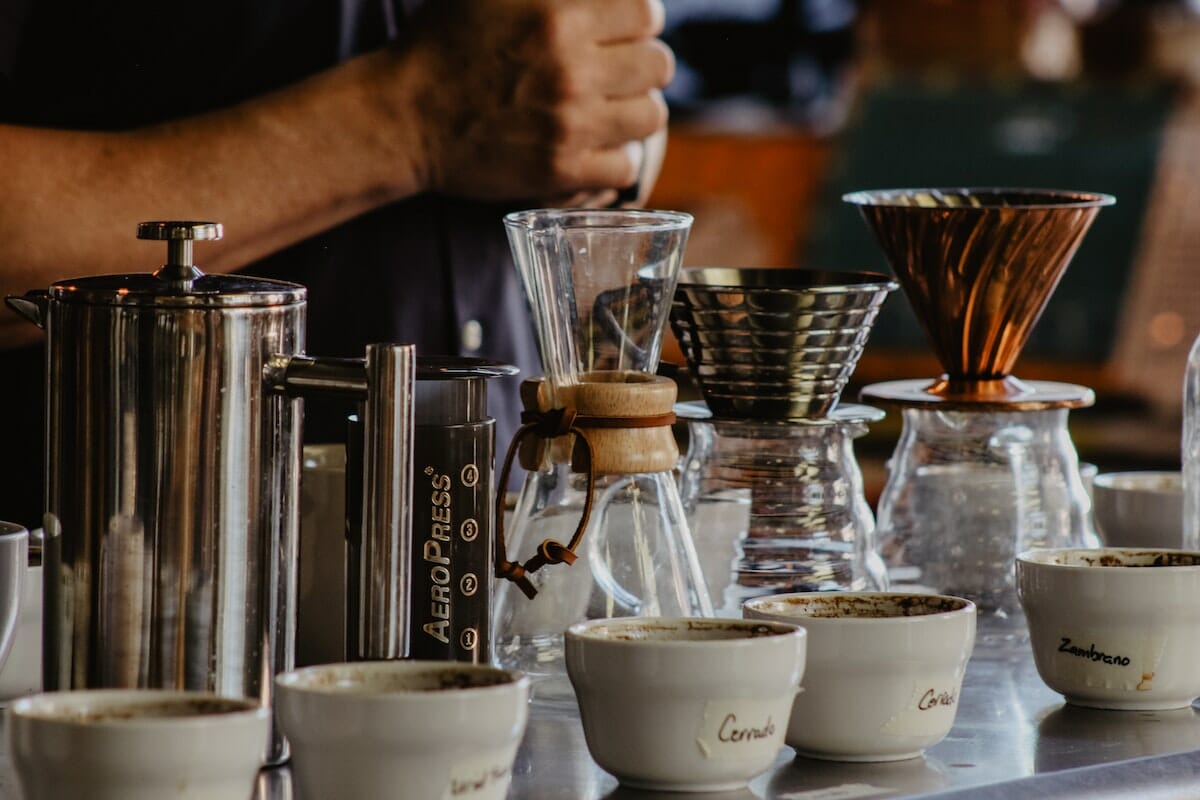A Comprehensive Overview to Different Coffee Brewing Methods You Ought To Try
The Scientific Research Behind Coffee Developing: How Temperature Level and Time Affect Your Drink
Understanding the science behind coffee developing discloses that temperature level and time are not simple variables however critical elements that determine the beverage's taste profile and general top quality. As we check out the subtleties of these elements, the question develops: just how can one efficiently balance temperature level and time to accomplish that perfect brew?
The Chemistry of Coffee Removal
The chemistry of coffee removal explores the intricate procedures that change raw coffee beans into the fragrant beverage appreciated worldwide. This change mostly entails the solubility of various compounds existing in the beans, which are affected by aspects such as work size, water quality, and the brewing approach utilized.
Throughout the developing process, warm water works as a solvent, extracting soluble substances, consisting of caffeine, lipids, sugars, and acids, from the coffee grounds. Each compound adds to the taste profile, fragrance, and body of the last drink. Acids are responsible for tasty and brilliant notes, while oils add to an abundant mouthfeel.
The extraction procedure is not consistent; different substances dissolve at different rates. The preliminary stages of brewing extract acids and sugars, resulting in a positive acidity, while extended extraction can bring about bitterness due to over-extraction of undesirable compounds. Understanding these chemical interactions is important for maximizing developing strategies, as the balance between extraction time and water temperature level can dramatically influence the total top quality of the coffee. Eventually, grasping the chemistry of coffee removal is key to accomplishing a all-round and flavorful cup.
Ideal Brewing Temperatures
Locating the ideal brewing temperature is vital for unlocking the complete capacity of coffee tastes and aromas - coffee brewing methods. Study indicates that the ideal array for developing coffee lies between 195 ° F to 205 ° F(90 ° C to 96 ° C) Within this range, the removal procedure properly liquifies the preferable soluble compounds in coffee beans, resulting in a well balanced and delicious cup
Developing at reduced temperatures, such as listed below 195 ° F(90 ° C ), might cause under-extraction, yielding a weak and acidic brew with low-key flavors. On the other hand, brewing at temperatures going beyond 205 ° F(96 ° C) can bring about over-extraction, creating a harsh and bitter taste due to the excessive dissolution of unwanted substances, such as tannins.
In addition, the optimal developing temperature level can vary depending on the coffee bean kind and roast degree. As an example, lighter roasts typically gain from somewhat higher temperature levels to enhance their intricate taste accounts, while darker roasts may be much better matched to lower temperatures to alleviate bitterness.
Ultimately, preserving accuracy in brewing temperature levels is important for accomplishing a harmonious equilibrium of tastes, making sure that every cup of coffee provides an enjoyable sensory experience.
Effect of Developing Time
Brewing time plays a critical role in determining the taste account and general high quality of coffee. The extraction process, which influences the taste, scent, and body of the beverage, is largely depending on how much time the coffee premises are in contact with water. Much shorter brewing times can lead to under-extraction, resulting in a sour or weak taste, as inadequate soluble compounds are liquified. Conversely, extended brewing can cause over-extraction, where undesirable substances are launched, causing an astringent or bitter preference.
Optimum developing time differs depending on the technique used and the grind dimension of the coffee. For example, a French press generally needs regarding four minutes, while coffee removal is usually completed within 25 to 30 secs. It is necessary to adjust brewing time in combination with various other variables, such as water temperature and coffee-to-water proportion, to accomplish the wanted flavor profile.
Comprehending the influence of developing time makes it possible for coffee lovers to refine their brewing techniques, ultimately improving the sensory experience of their cup (coffee brewing methods). With cautious attention to this variable, one can open the complete capacity of the coffee, disclosing its one-of-a-kind attributes and subtleties
Brewing Techniques and Their Impacts

For circumstances, approaches like French press and cool mixture enable a much longer steeping time, resulting in a fuller body and robust taste due to boosted extraction of oils and soluble solids. Conversely, coffee brewing uses high stress and a shorter extraction time, creating a focused shot that emphasizes intense flavors and an abundant crema.
Pour-over techniques, such as Chemex or V60, provide a more regulated removal procedure, enabling the brewer to control circulation rate and water circulation, which can enhance illumination and clarity. On the other hand, percolation methods cycle water via the coffee grounds multiple times, visite site bring about a more powerful, typically bitter taste.
Lastly, using paper filters versus metal filters can also impact the last taste; paper filters typically yield a cleaner mug by capturing oils and great bits, while steel filters enable even more oils to travel through, adding to a fuller mouthfeel - coffee brewing methods. Recognizing these nuances can elevate the coffee experience significantly
Tips for Perfecting Your Mixture
A well-executed brew can transform even the most basic coffee right into a remarkable experience. To achieve this, attention to information is crucial. Start with high-quality, freshly roasted beans, as their taste profile decreases in time. Grind the beans simply prior to brewing to take full advantage of freshness, guaranteeing the grind dimension matches your brewing approach-- coarser for French press and finer for espresso.
Water high quality plays an important duty; use filteringed system water without contaminations. The ideal developing temperature level ranges between 195 ° F and 205 ° F(90 ° C to 96 ° C ) Too hot can burn the coffee, while also awesome might under-extract flavors.
Timing is equally essential. For immersion approaches, soaking for 3 to five mins is optimum, whereas drip approaches normally take around 5 mins. Experiment with brew times to discover your preferred strength.

Verdict
In summary, the complex relationship between temperature level and time is extremely important in the coffee brewing process. Comprehending these scientific concepts empowers individuals to improve their brewing techniques, inevitably leading to an extra well balanced and enjoyable coffee experience.
Recognizing the scientific research Visit This Link behind coffee developing exposes that temperature level and time are not plain variables yet crucial components that determine the drink's taste account and overall quality. Comprehending these chemical interactions is vital for maximizing developing techniques, as the balance in between removal time and water temperature level can significantly affect the overall quality of the coffee.Developing time plays a pivotal role in establishing the taste account and overall high quality of coffee. By focusing on these components-- bean high quality, grind size, water temperature level, steeping time, and ratio-- you can raise your coffee brewing procedure, resulting in a constantly premium mug.
In summary, the complex relationship in between temperature level and time is vital in the coffee brewing procedure.